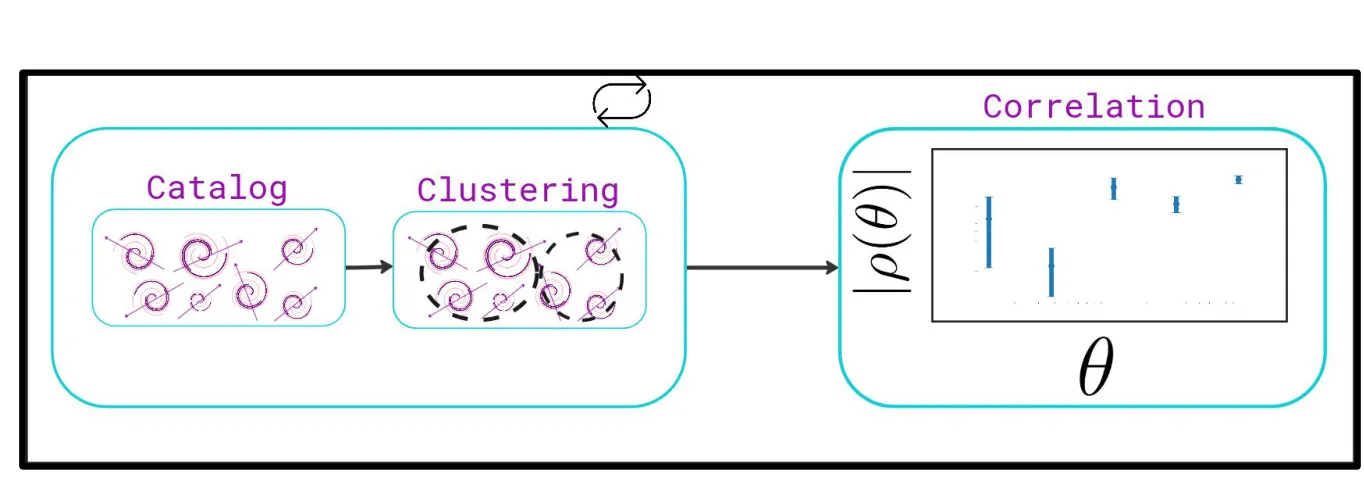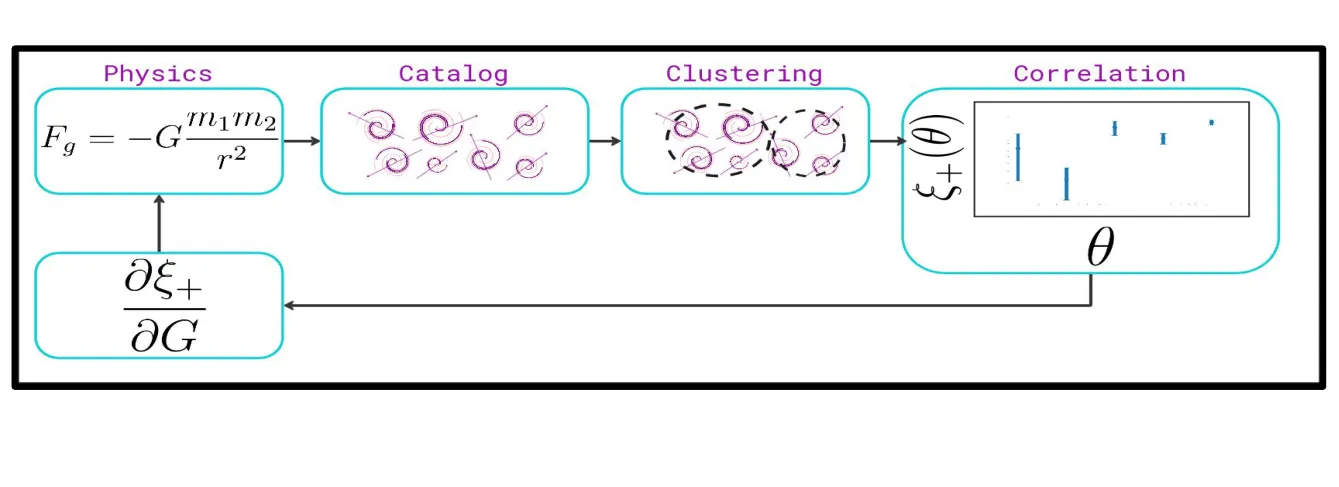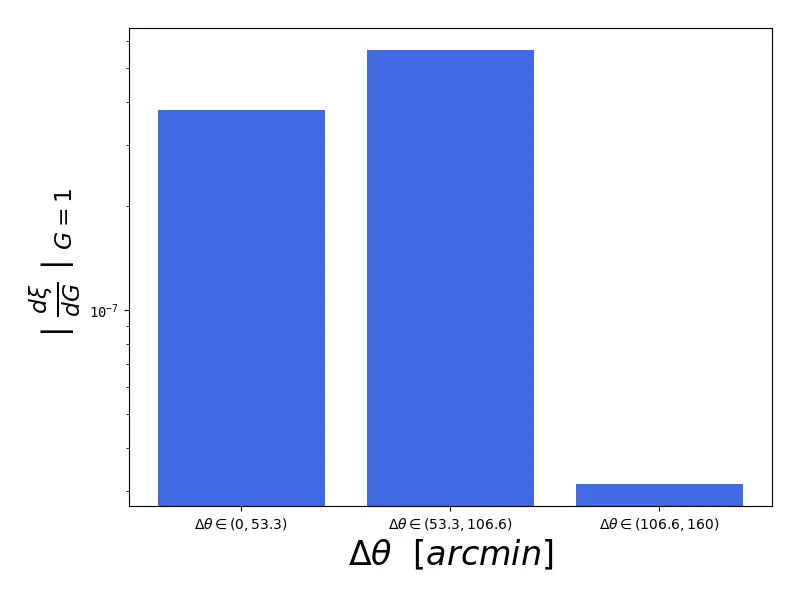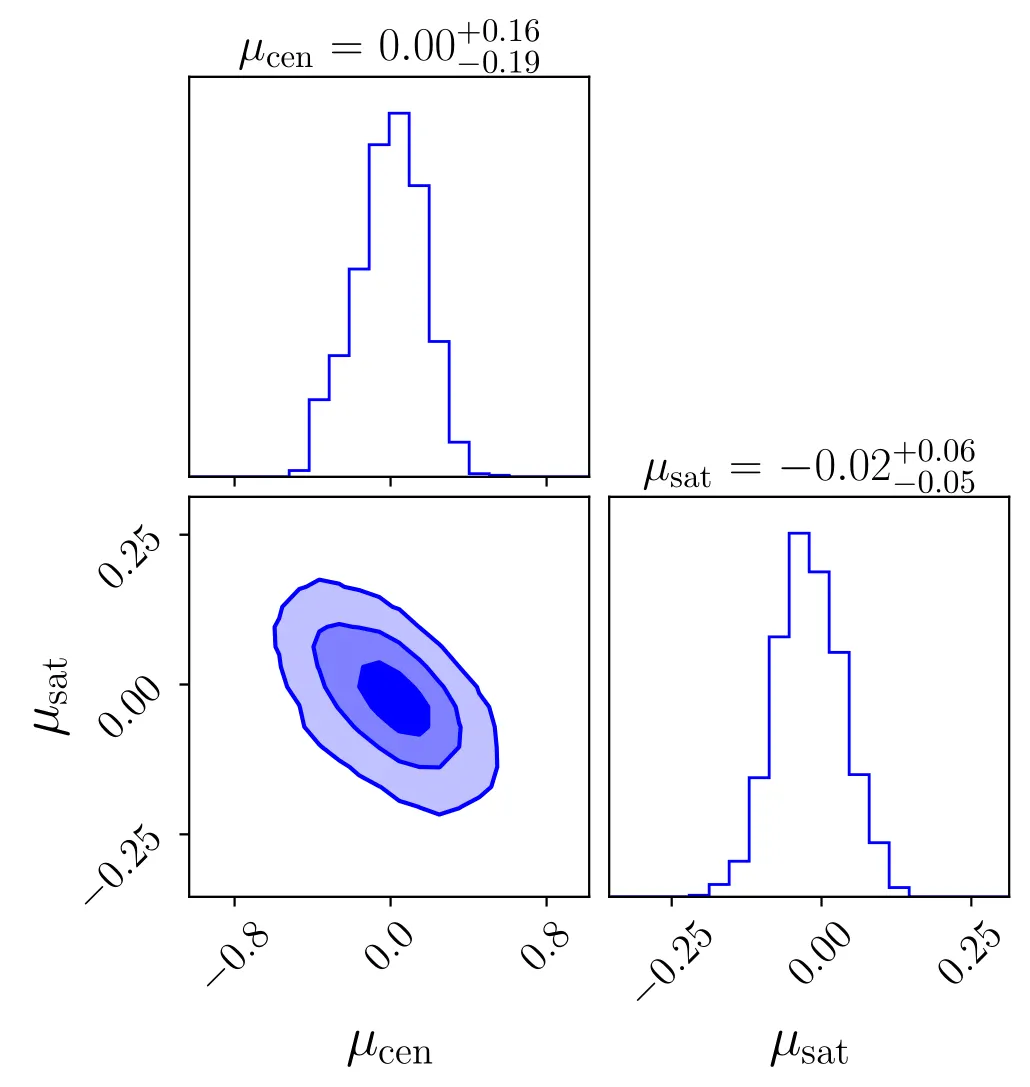
Northeastern University
Northeastern University and IAIFI
Northeastern University
Cosmic Dawn Center and Niels Bohr Institute, University of Copenhagen
Cosmic Dawn Center and University of Texas at Austin
University of Hawa, Hilo
Caltech/IPAC
Cosmic Dawn Center and DTU-Space, Technical University of Denmark
Aalto Univerisity and University of Helsinki
Laboratoire Univers et Particules de Montpellier, CNRS & Universite de Montpellier, Parvis Alexander Grothendieck, Montpellier
Rochester Institut of Technology
Space Telescope Science Institute
Aix Marseille University, CNRS, CNES, LAM
NASA JPL
(in prep)
*correspondance to berman.ed@northeastern.edu
Properly estimating correlations between objects at different spatial scales necessitates distance calculations. For this reason, most widely adopted packages for estimating correlations use clustering algorithms to approximate local trends. Methods for quantifying the error introduced by clustering have been understudied. In response, we present an algorithm for estimating correlations that is probabilistic in the way that it clusters objects, enabling us to quantify the uncertainty caused by clustering simply through model inference. We also observe that these soft clustering assignments enable correlation estimators that are theoretically differentiable with respect to their input catalogs. Thus, we follow by building up a theoretical framework for differentiable correlation functions and describe their utility in comparison to existing surrogate models. Notably, we find that the repeated use of the normalization and distance function calls makes gradient calculations slow and sparsity patterns in Jacobians that propagate through the chain rule makes the precision unstable, pointing towards either approximate or surrogate methods as a necessary solution to exact gradients from correlation functions. To that end, we close with a discussion of surrogate models as proxies for correlation functions. We provide an example that demonstrates the efficacy of surrogate models to enable gradient based optimization of astrophysical model parameters, successfully minimizing a correlation function output. Our numerical experiments cover science cases across cosmology, from point spread function (PSF) modeling efforts to gravitational simulations to intrinsic alignments (IA). We release the code used in this study at https://github.com/EdwardBerman/cosmo-corr and https://github.com/EdwardBerman/jax-cosmo-corr.
Probabilistic clustering assignments enables us to study epistemic uncertainty in addition to aleatoric uncertainty.


We forward model galaxy evolution with ODEs and show how we can backpropogate a shear-shear correlation all the way through to the underlying physics. The key method is using skip gradients to pass information from objects created from clustering to their constituent galaxies.


Using surrogates, we have a differential function from the underlying physics straight to the correlation value. We leverage this differentiability to perform Hamiltonian Monte Carlo (HMC) and find posterior distributions over IA parameters most likely to minimize a correlation function.


@misc{berman2025softclusteringcorrelationestimators,
title={On Soft Clustering For Correlation Estimators: Model Uncertainty, Differentiability, and Surrogates},
author={Edward Berman and Sneh Pandya and Jacqueline McCleary and Marko Shuntov and Caitlin Casey and Nicole Drakos and Andreas Faisst and Steven Gillman and Ghassem Gozaliasl and Natalie Hogg and Jeyhan Kartaltepe and Anton Koekemoer and Wilfried Mercier and Diana Scognamiglio and COSMOS-Web and : and The JWST Cosmic Origins Survey},
year={2025},
eprint={2504.06174},
archivePrefix={arXiv},
primaryClass={astro-ph.IM},
url={https://arxiv.org/abs/2504.06174},
}
@INPROCEEDINGS{2025AAS...24542401B,
author = {{Berman}, Edward and {McCleary}, Jacqueline},
title = "{On Differentiable Correlation Functions}",
booktitle = {American Astronomical Society Meeting Abstracts},
year = 2025,
series = {American Astronomical Society Meeting Abstracts},
volume = {245},
month = jan,
eid = {424.01},
pages = {424.01},
adsurl = {https://ui.adsabs.harvard.edu/abs/2025AAS...24542401B},
adsnote = {Provided by the SAO/NASA Astrophysics Data System}
}